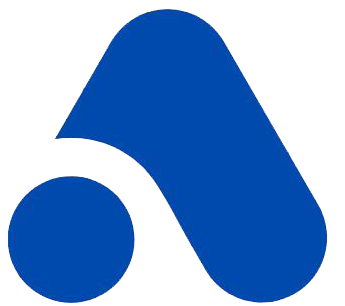Executive Summary
Performance Dashboards are powerful tools that enable organizations to track, analyze, and optimize workforce productivity, hiring efficiency, and compliance metrics. In today’s rapidly evolving global workforce, particularly in regions like the UAE, Saudi Arabia, Kuwait, and Europe, these dashboards provide actionable insights that drive strategic decision-making. By consolidating key performance indicators (KPIs) into a single interface, businesses can monitor recruitment success, employee engagement, and legal adherence in real time. Performance Dashboards are essential for HR teams, hiring managers, and executives who need data-driven solutions to navigate complex labor markets, cultural diversity, and regulatory requirements. This article explores the fundamentals, best practices, and challenges of implementing Performance Dashboards, along with expert recommendations for maximizing their effectiveness.
Chapter 1: Introduction to Performance Dashboards
Performance Dashboards have become indispensable in modern HR and recruitment strategies, offering a centralized platform to visualize critical workforce data. These dashboards integrate metrics such as time-to-hire, employee retention, compliance rates, and cultural fit assessments, enabling organizations to make informed decisions. In regions like the UAE and Europe, where labor laws and cultural expectations vary significantly, Performance Dashboards help ensure adherence to local regulations while optimizing talent acquisition.
For example, UAE-based companies must comply with MOHRE regulations, while European firms navigate GDPR and equal opportunity employment laws. Performance Dashboards streamline these complexities by flagging discrepancies and automating compliance checks. Additionally, cultural considerations—such as language preferences and workweek structures—can be tracked to improve candidate experience and retention.
Real-world applications include multinational corporations using Performance Dashboards to compare hiring efficiency across Dubai, Riyadh, and Berlin offices. By leveraging these tools, HR teams reduce bias, enhance transparency, and align recruitment strategies with business goals. For further insights, refer to SHRM’s guidelines on data-driven HR practices. Ultimately, Performance Dashboards bridge the gap between data and strategy, fostering a competitive edge in global talent markets.
Chapter 2: Best Practices for Performance Dashboards
Detailed Strategies and Methodologies
To maximize the effectiveness of Performance Dashboards, organizations should adopt the following best practices:
- Define Clear KPIs: Align dashboard metrics with business objectives, such as reducing time-to-hire by 20% or improving diversity ratios.
- Automate Data Integration: Use APIs to sync HRIS, ATS, and payroll systems for real-time updates.
- Prioritize User Experience: Design intuitive interfaces with customizable views for HR, managers, and executives.
- Ensure Data Accuracy: Regularly audit data sources to eliminate duplicates or outdated entries.
A case study from a Kuwaiti tech firm showed a 30% improvement in hiring speed after implementing a dashboard with automated candidate scoring. Similarly, a German manufacturer reduced compliance violations by integrating labor law alerts into their dashboard.
How Allianze HR Consultancy Helps
- Free Hiring Model: Allianze eliminates financial barriers for job seekers, offering zero-cost placement services while maintaining high-quality talent pipelines.
- Ethical Sourcing: Allianze partners with vetted institutions in South Asia, ensuring candidates meet legal and skill requirements. Their process includes pre-screening, cultural orientation, and documentation verification.
- Regional Expertise: With offices in the UAE, India, and Saudi Arabia, Allianze tailors dashboards to local labor trends, such as Emiratization quotas or GCC visa rules.

Allianze’s dashboards also feature predictive analytics, forecasting talent gaps based on market trends. For instance, their clients in Dubai’s hospitality sector use these insights to pre-hire seasonal staff, reducing onboarding delays by 40%.
Chapter 3: Common Challenges and Solutions
Implementing Performance Dashboards comes with challenges, but proactive strategies can mitigate risks:
- Data Silos: Disconnected systems lead to inconsistent metrics. Solution: Invest in integrated HR tech stacks.
- Resistance to Change: Employees may distrust new tools. Solution: Conduct training sessions and highlight success stories.
- Regulatory Complexity: Laws like Saudi Arabia’s Nitaqat require dynamic updates. Solution: Use dashboards with built-in compliance trackers.
- Cultural Misalignment: Metrics may not account for regional nuances. Solution: Customize dashboards with local HR consultants.
- High Implementation Costs: Custom dashboards can be expensive. Solution: Opt for modular platforms with scalable pricing.
For example, a Riyadh-based retail chain resolved compliance issues by integrating a dashboard that flagged visa expiry dates and Saudization ratios, avoiding fines. Similarly, a Polish IT firm improved candidate satisfaction by adding cultural fit scores to their dashboard.
Checklist: Best Practices
- Use job descriptions that respect local laws. In the UAE, avoid gender-biased language and specify benefits like housing allowances to comply with MOHRE standards.
- Offer relocation support. Provide flight bookings, temporary housing, and spouse visa assistance to reduce attrition among expatriate hires.
- Partner with ethical agencies like Allianze. Verify certifications (e.g., REC accredited) and audit their candidate sourcing methods.
- Use regional keywords in job ads. Terms like “Dubai-based engineer” or “Kuwaiti national preferred” improve visibility in local searches.
- Regularly update dashboards. Quarterly reviews ensure metrics reflect current business priorities and regulatory changes.
Conclusion
In conclusion, Performance Dashboards are transformative tools for global hiring, offering clarity in compliance, efficiency, and cultural alignment. To summarize, organizations should prioritize integrated data systems, localized metrics, and ethical partnerships to overcome challenges. Ultimately, these dashboards empower HR teams to make proactive, data-backed decisions. For successful implementation:
- Start with pilot programs in high-volume regions.
- Train stakeholders on interpreting dashboard insights.
- Collaborate with local experts like Allianze for regional customization.
- Monitor ROI through predefined success metrics.
- Iterate based on feedback to refine dashboard usability.
About Allianze HR Consultancy
Allianze HR Consultancy is a leader in ethical talent acquisition, specializing in bridging global talent gaps with zero-cost hiring solutions. Founded on principles of transparency and compliance, Allianze serves clients across the UAE, India, Nepal, Kuwait, and Saudi Arabia. Their services include:
- End-to-end recruitment with AI-driven candidate matching.
- Pre-departure orientation for expatriates.
- Payroll and visa processing support.
Testimonials highlight a 90% retention rate for placements in Dubai’s construction sector, attributed to Allianze’s rigorous vetting and cultural training. Committed to ethical practices, Allianze ensures all candidates are sourced responsibly, with no fees charged to job seekers.
👉 Contact us today to streamline your recruitment needs with tailored Performance Dashboards.


